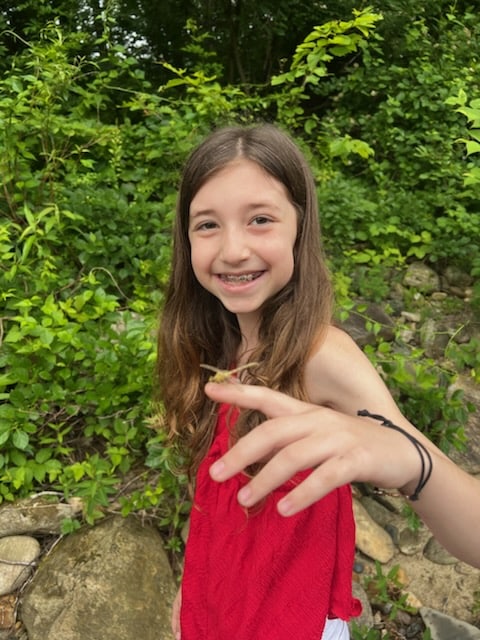Chester Elementary students explore the Westfield River behind their school with Meredyth Babcock of the Wild and Scenic Westfield River Committee.
Reminder Publishing submitted photo
CHESTER — Volunteer and Project Coordinator Meredyth Babcock from the Wild and Scenic Westfield River Committee made quite a splash at the Chester Elementary School as they engaged students in a three-hour hands-on river ecology and stream study on June 14, said school Principal Vanna Maffuccio.

Reminder Publishing submitted photo
Students used the school’s river path to access the West Branch of the Westfield River, which flows directly behind the school building on Middlefield Road.
Students were excited to locate, study, and discuss what they found in the river, said Maffuccio, including the longnose dace fish and four crayfish in the macroinvertebrates category. Among aquatic insects, they found mayflies, true flies. stoneflies, dragonflies and damselflies, caddisflies and beetles.
“In addition to students learning that macroinvertebrates are invertebrates that are large enough to be seen without a microscope, they also learned the best places to look for these organisms are under rocks in the rocky, sandy river bottom, within leaf and plant litter. Students then learned another vocabulary word: detritus, dead and decaying plant materials — plant litter; how to handle and treat them with care; and how to identify different macroinvertebrates,” Maffuccio said.
She said they also learned why finding and monitoring macroinvertebrates is important, and what these organisms tell us about the health of the Westfield River. Macroinvertebrates can indicate the water quality of a stream, since these organisms are affected by the physical, chemical and biological conditions of the stream. Some macroinvertebrates are more sensitive to pollution than others, and the abundance and diversity of macroinvertebrates indicate overall stream quality.

Reminder Publishing submitted photo
“Since we discovered an abundant amount of macroinvertebrates that were categorized as being highly to moderately sensitive to pollution, we determined and celebrated the good health of our river’s water,” Maffuccio said.
The students also had a closeup view of the cycle of life.
“Students saw this dragonfly hatching and then one student in the group, Sophia Stone, was able to hold it while it pumped blood into its wings and as it cleaned its eyes. As the dragonfly launched from her finger, a bird swooped in and devoured it,” Maffuccio related.
She said luckily the students were able to see this act as miraculous, and that every living organism — animals and plants, big and small — depends on another animal or plant species for its survival.
“The event they had just witnessed allowed our students to see how our healthy ecosystem operates. It provided another first-hand and eye-opening experience that our students learned in the field instead of through a text book and I’m very grateful for the work the Wild and Scenic Westfield River Committee is doing here with us today, and for the many other partnerships our school has formed in order to ensure we can continue to bring meaningful, rich learning experiences to our students. I strongly believe they deserve and are receiving the best education possible here at Chester Elementary School,” Maffuccio said.
Babcock was accompanied by an intern who works with the committee.



